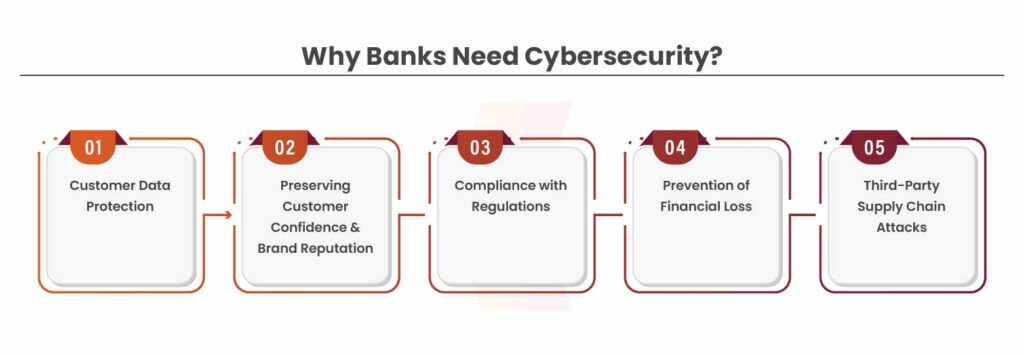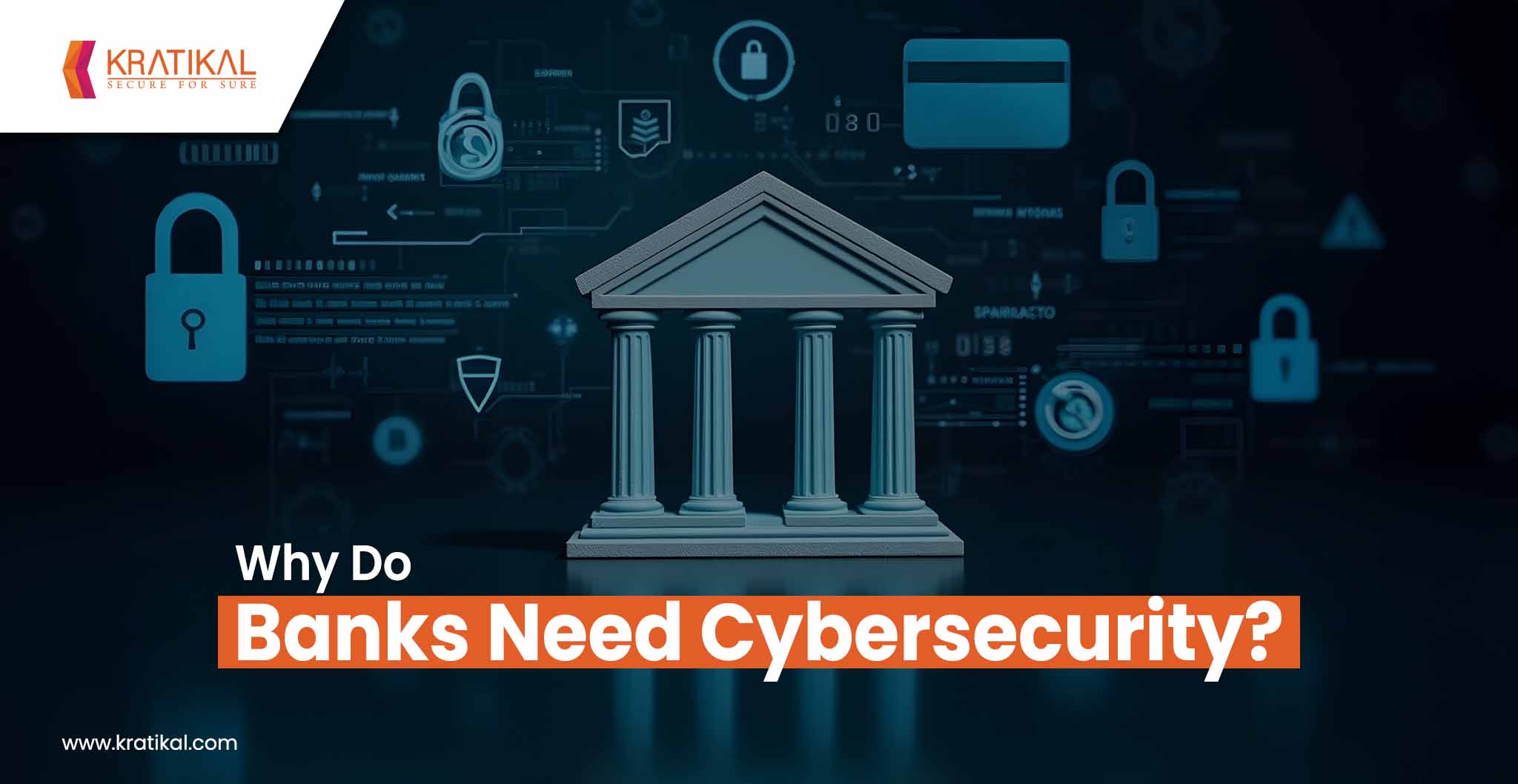Cyber security has emerged as the first line of defense for the banking sector, facing an increasing surge of sophisticated digital threats. With sensitive data and billions in assets at stake, financial institutions are in a constant race to outsmart hackers.
What are the most critical threats banks face today, and how are they protecting your money and information? This blog explores key cybersecurity challenges in banking and highlights the best practices and innovations securing the future of finance.
Table of Contents
An Overview of Banking Cyber security
Cyber security in the banking sector involves a range of technologies, strategies, and protocols aimed at protecting financial institutions’ digital assets, systems, and networks from cyber threats. With banks handling vast volumes of sensitive data, such as customer details, transaction histories, and financial records, robust security is essential to guard against breaches, fraud, and cyberattacks.
It encompasses securing every aspect of a bank’s digital environment, from internet banking platforms to internal databases, ensuring protection against unauthorized access, data leaks, and malicious intrusions. Strong cybersecurity not only helps banks meet regulatory standards but also plays a crucial role in sustaining customer trust and ensuring seamless operations in an increasingly hostile digital landscape.
Get in!
Join our weekly newsletter and stay updated
Why Banks Need Cyber security?
Banks rank among the most at-risk institutions in the face of cyber threats. Handling massive volumes of sensitive data and high-value financial transactions every day makes them prime targets for hackers. To secure their operations and uphold customer privacy and trust, strong cybersecurity is not just important—it’s essential.
Here are the main reasons why banks must invest in cybersecurity defenses:

Customer Data Protection
Protecting customer data is fundamental to banking operations. Banks hold vast amounts of sensitive information—from personal details like Social Security numbers and addresses to critical financial records. If this data falls into the wrong hands, it can result in identity theft, fraud, and major financial harm to individuals.
Cyber security is essential to defend against such threats. Banks rely on encryption, firewalls, and strict access controls to prevent unauthorized access. A failure to secure this data can lead to financial losses, a breakdown in customer trust, and serious reputational damage.
Preserving Customer Confidence & Brand Reputation
Trust is the pillar of every banking relationship. Customers rely on their financial institutions to protect their personal and financial data. A single breach can severely damage that trust, resulting in customer loss and lasting harm to the bank’s reputation.
Cyber incidents often gain rapid media attention, causing public confidence to decline instantly. Implementing robust cybersecurity measures is essential to uphold trust and assure customers that their transactions and sensitive data are secure.
Compliance with Regulations
The financial industry is one of the most tightly regulated sectors, requiring banks to follow stringent data protection and cybersecurity compliance standards. Regulations like the General Data Protection Regulation (GDPR) in Europe and the California Consumer Privacy Act (CCPA) in the U.S. outline clear rules for safeguarding customer data.
Failure to comply can lead to severe penalties, legal repercussions, and even the loss of operating licenses. By adopting strong cybersecurity measures, banks not only defend against digital threats but also ensure full compliance with these vital regulatory frameworks.
Prevention of Financial Loss
A successful cyberattack can result in substantial financial damage to banks. This might involve direct theft of funds, expenses tied to system outages, or the high costs of restoring compromised infrastructure. Additionally, banks may face legal liability for reimbursing customers impacted by fraud or identity theft stemming from a breach.
To reduce these financial risks, banks must invest in advanced cybersecurity solutions. Implementing proactive defenses like real-time threat monitoring, multi-factor authentication, and AI-powered threat detection can help stop cyber threats before they escalate into major financial setbacks.
Third-Party Supply Chain Attacks
Banks depend on third-party vendors and service providers for critical functions such as cloud storage, payment processing, and software management. However, these external partners can introduce vulnerabilities into a bank’s cybersecurity framework. A breach in a third-party system can serve as an entry point for attackers to infiltrate the bank’s network and access sensitive data.
Supply chain attacks have grown increasingly common in recent years, with hackers often exploiting the weaker security of smaller vendors to compromise larger financial institutions.
Book Your Free Cybersecurity Consultation Today!
Emerging Trends in Banking Cybersecurity
The future of cyber security in banking will be driven by rapid technological advancements and increasingly rigorous regulatory demands. As cyber threats grow more complex, banks will adopt emerging technologies like AI-powered security, blockchain, and quantum computing to bolster their defenses. AI and machine learning will play a critical role in detecting and responding to threats in real time by identifying suspicious patterns and behaviors.
Blockchain’s decentralized architecture will enhance transactional security and reduce fraud risks, while quantum computing, though still in its infancy, has the potential to revolutionize encryption, either strengthening or challenging existing cybersecurity frameworks. Alongside these innovations, financial institutions will face mounting regulatory pressure to uphold stringent data protection standards.
Governments and global regulatory bodies are expected to enforce tighter cybersecurity requirements, compelling banks to prioritize compliance and robust defense strategies. The future of banking cybersecurity lies at the intersection of cutting-edge innovation and proactive regulation, ensuring financial systems remain resilient in a rapidly evolving threat landscape.
Conclusion
In an era where digital threats are becoming more advanced and persistent, cybersecurity is no longer optional for the banking sector—it’s a fundamental necessity. As financial institutions continue to digitize services and handle increasing volumes of sensitive data, the risks associated with cyber attacks grow proportionally. From protecting customer data and preserving trust to meeting regulatory obligations and preventing financial losses, cybersecurity underpins every aspect of secure banking operations. By embracing cutting-edge technologies, strengthening third-party risk management, and staying ahead of evolving threats, banks can build a resilient digital infrastructure that safeguards not only their assets but also the financial well-being of their customers.
FAQs
- Why is cyber security important in the banking sector?
Cybersecurity is crucial for banks because they safeguard not just funds but also highly sensitive personal and financial information. Given the immense value of this data, banks are frequent targets for cyberattacks. To mitigate these risks, they must implement comprehensive security measures to protect both their systems and their customers’ trust.
- What is cybersecurity risk in banking?
Cybersecurity risk assessment in banking involves identifying, analyzing, and evaluating potential cyber threats and vulnerabilities that could compromise the confidentiality, integrity, or availability of a bank’s information systems and customer data. This process helps banks proactively address security gaps and protect critical digital assets from cyberattacks.









Leave a comment
Your email address will not be published. Required fields are marked *